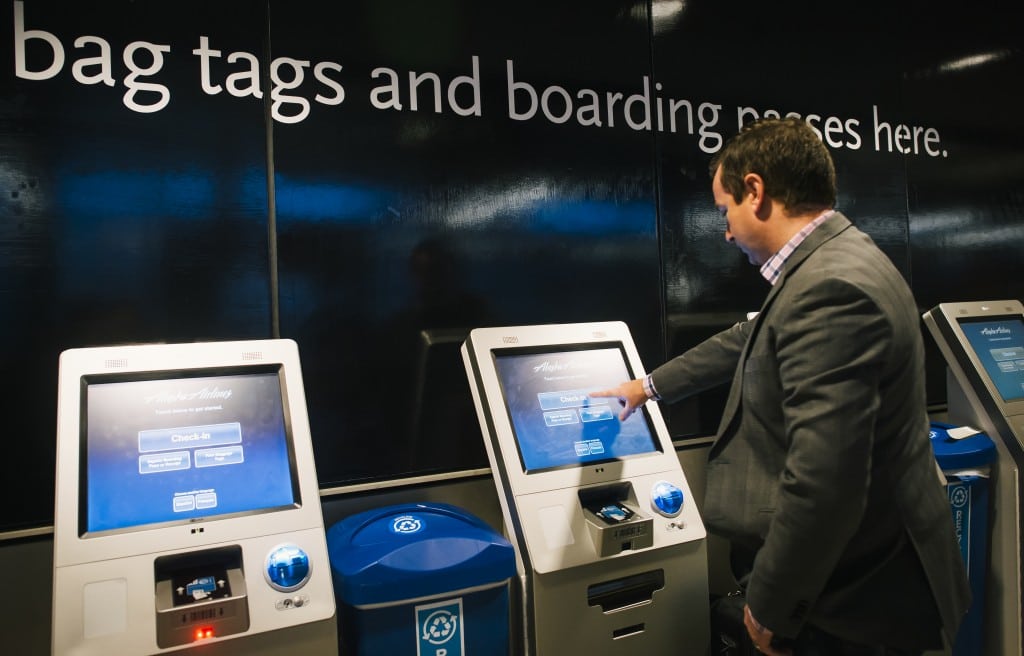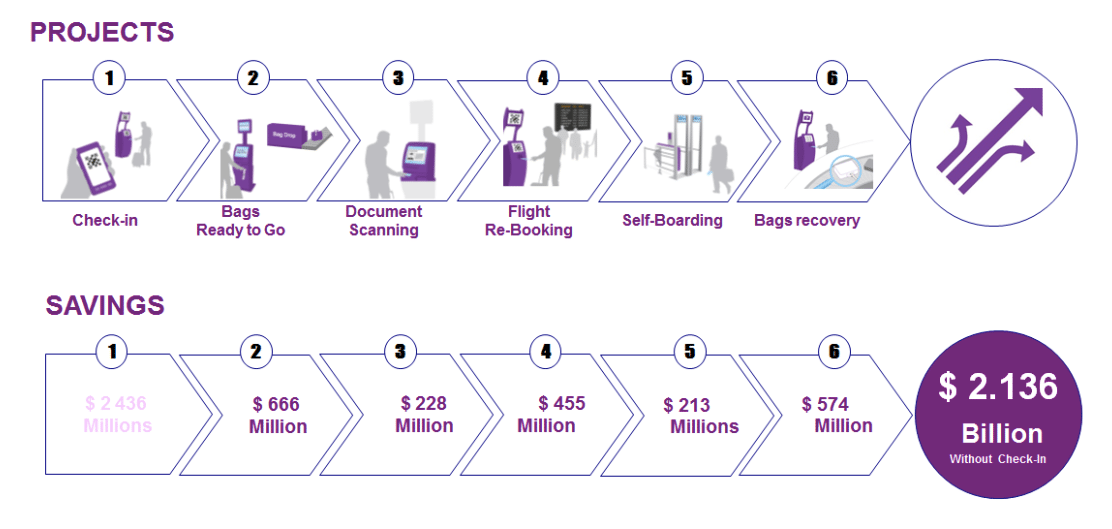Skift Take
More passengers will be flying twenty years from now than ever in aviation's history, with projections more than doubling today's passenger numbers. Upscaling the aviation industry to meet this unprecedented demand will require new and more efficient processes, and greater investments in technology.
Alaska Airlines has become the second North American airline to achieve the International Air Transport Association’s (IATA) Fast Travel Platinum status, joining Hawaiian Airlines, SAS, Qantas, and Air New Zealand.
The Fast Travel program is part of IATA’s ongoing passenger experience improvement initiatives, and aims to give travelers a seamless travel experience through increased used of automation, while saving airlines billions in operating costs.
As part of the Fast Travel initiative, airlines must adopt new technologies like self-check-in and/or automatic check-in, bags ready-to-go (home printed bag tags), automated flight rebooking, self-boarding, and automated bag reporting for missing bags to aid recovery.
“IATA offers Green status when an airline has achieved Fast Travel compliant projects at one airport; Gold status for completing all six aspects at the same airport; and Platinum status when four or more Fast Travel compliant solutions are offered to at least 80% of the airline’s passengers,” explains Perry Flint, Head of Corporate Communications for IATA, The Americas.
To qualify for Platinum status, and improve its passenger experience, Alaska Airlines created a Department of Customer Innovation which pioneered home bag-tagging in the U.S. and is focused on reducing the pain points of travel through technology.
The airline has implemented Biometric Board Room lounge access, online self-bag-tagging, a proprietary Airport of the Future check-in process at Ted Stevens International Airport in Anchorage, Alaska followed by another at Seattle-Tacoma International Airport, internet bookings, and wireless check-in by smartphone or wireless hand-held device.
“Flying should be convenient and simple,” says Ben Minicucci, Alaska Airlines’ Executive Vice President and COO. “At Alaska, we’re working hard to pioneer the use of technology that will reduce wait times and let our customers speed through check in and security.”
IATA’s Fast Travel Program Project Manager Hugh Best said in a report on IATA’s on-line newsletter this year that airlines stand to save a billions in infrastructural upgrades required to cope with the rise in passenger numbers between over the next twenty years; estimating a billion dollars saved for each terminal that doesn’t have to be expanded to accommodate a rise in passenger traffic.
In its Fast Travel Program strategy white paper the airlines organization breaks down the savings from each technology implemented.
Saving passengers time and sparing them hassle, while helping airlines save money makes IATA’s Fast Travel Program a win-win. But implementing is not always easy.
In the U.S., automation of certain travel processes is more difficult than in other parts of the world. While home bag-tagging is taking off, full automation of the baggage check-in process is limited by TSA security restrictions.
“Automated bag-drops may not be used, so even when using self-tagging the bag has to be handed in to an airline representative and cannot be accepted by a machine. And there are specific ID requirements in the US when dropping off the bag,” said Best in his report to the industry. “What it comes down to is that the TSA is fine with the principal of self-tagging, but airlines and airports should always proceed carefully and talk to the TSA before implementing any initiative.”
The Daily Newsletter
Our daily coverage of the global travel industry. Written by editors and analysts from across Skift’s brands.
Have a confidential tip for Skift? Get in touch
Tags: airlines, alaska airlines, iata
Photo credit: Alaska Airlines automated kiosks. Alaska Airlines

